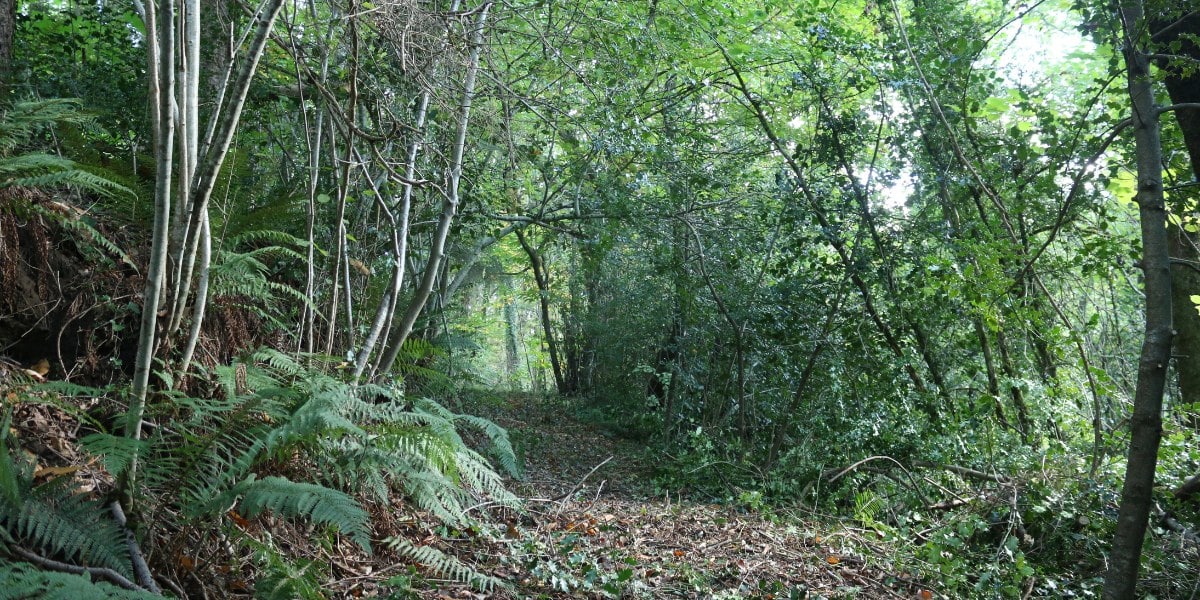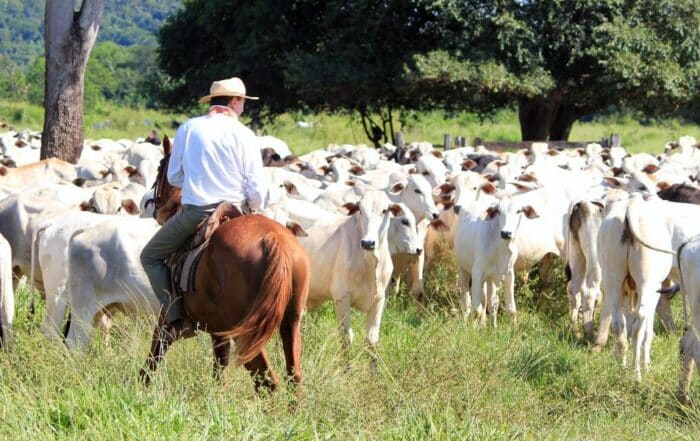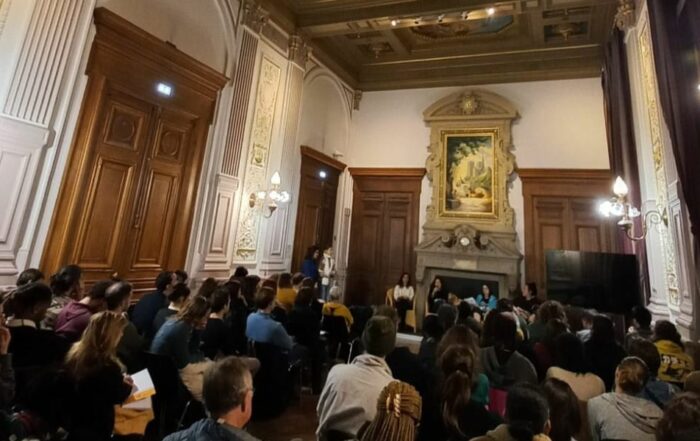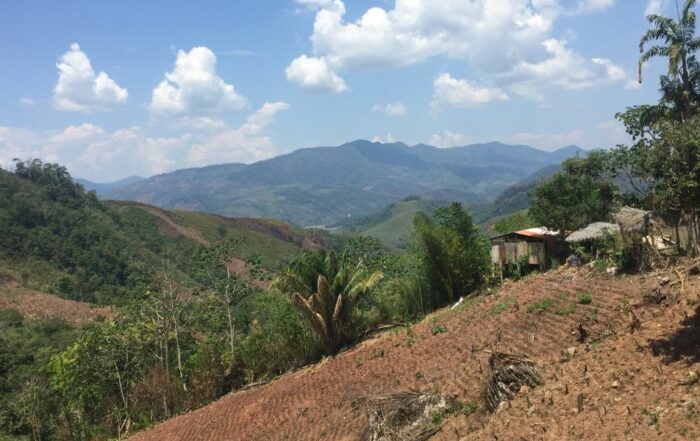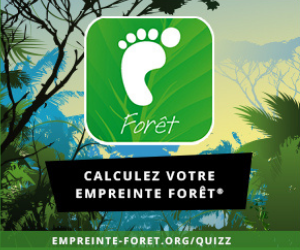As part of the SEVE project, Envol Vert helps forest owners improve the management of their forests. The first step is to understand the forest, its characteristics, its strengths, its challenges and its needs. Envol Vert offers forest diagnostics to landowners who wish to have a three-part study of their plot: a study of the tree population, the soil and the potential biodiversity. After a pause in diagnostics in 2024, they resumed in 2025 and 10 additional diagnostics are planned for 2026.
A step-by-step support process
In order to maximise the impact on the forests supported, priority is given to plots larger than 5 hectares and/or with remarkable biodiversity (Natura 2000 areas, ancient forests, etc.). An initial visit is scheduled with the owner to visit the site, prepare the assessment and check the accessibility of the plot. This is followed by the assessment with the owner, during which various measurements are taken on the stand. The owner’s presence allows them to ask questions about the management of their forest and to familiarise themselves with the main indicators taken from their forest. Soil samples are taken for later analysis. The Potential Biodiversity Index is then calculated. This index was created in 2008 by the CNPF and INRAE and is based on a rapid assessment of 10 characteristics that influence the capacity of forest stands to support animal, plant and fungal species.
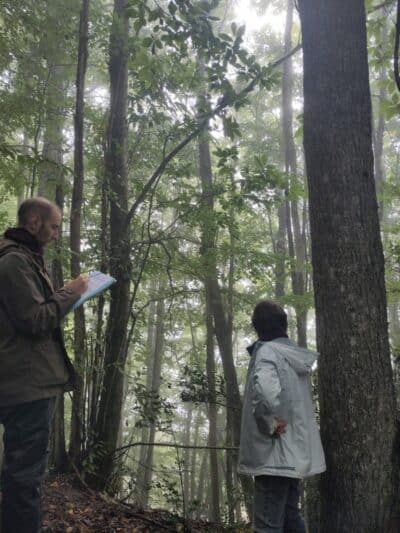
The ten criteria assessed are as follows:
After the diagnosis: the start of forest management
Once the diagnosis has been completed, the results are sent to the owner along with recommendations for gentle silvicultural management. Depending on the results, silvicultural work and felling may be recommended. Each diagnosis recommends leaving 10% to 25% of each forest to evolve freely, particularly in areas with high biodiversity potential such as rocky areas, aquatic areas or areas that are difficult to access.
Once these recommendations have been made, owners receive a one-day training course on Continuous Cover Mixed Forestry in order to continue to learn the main principles of gentle forest management advocated by Envol Vert. Landowners can continue to call on Envol Vert for funding applications for forestry work, the implementation of management documents or to contact professionals in the upstream and downstream wood industry.
Since the start of the project, Envol Vert has supported more than 25 landowners in total. If you are a landowner and would like to receive support from the SEVE project, please contact us at
seve[at]envol-vert.org
!
As part of the SEVE project, Envol Vert helps forest owners improve the management of their forests. The first step is to understand the forest, its characteristics, its strengths, its challenges and its needs. Envol Vert offers forest diagnostics to landowners who wish to have a three-part study of their plot: a study of the tree population, the soil and the potential biodiversity. After a pause in diagnostics in 2024, they resumed in 2025 and 10 additional diagnostics are planned for 2026.
A step-by-step support process
In order to maximise the impact on the forests supported, priority is given to plots larger than 5 hectares and/or with remarkable biodiversity (Natura 2000 areas, ancient forests, etc.). An initial visit is scheduled with the owner to visit the site, prepare the assessment and check the accessibility of the plot. This is followed by the assessment with the owner, during which various measurements are taken on the stand. The owner’s presence allows them to ask questions about the management of their forest and to familiarise themselves with the main indicators taken from their forest. Soil samples are taken for later analysis. The Potential Biodiversity Index is then calculated. This index was created in 2008 by the CNPF and INRAE and is based on a rapid assessment of 10 characteristics that influence the capacity of forest stands to support animal, plant and fungal species.

The ten criteria assessed are as follows:
After the diagnosis: the start of forest management
Once the diagnosis has been completed, the results are sent to the owner along with recommendations for gentle silvicultural management. Depending on the results, silvicultural work and felling may be recommended. Each diagnosis recommends leaving 10% to 25% of each forest to evolve freely, particularly in areas with high biodiversity potential such as rocky areas, aquatic areas or areas that are difficult to access.
Once these recommendations have been made, owners receive a one-day training course on Continuous Cover Mixed Forestry in order to continue to learn the main principles of gentle forest management advocated by Envol Vert. Landowners can continue to call on Envol Vert for funding applications for forestry work, the implementation of management documents or to contact professionals in the upstream and downstream wood industry.
Since the start of the project, Envol Vert has supported more than 25 landowners in total. If you are a landowner and would like to receive support from the SEVE project, please contact us at
seve[at]envol-vert.org
!

